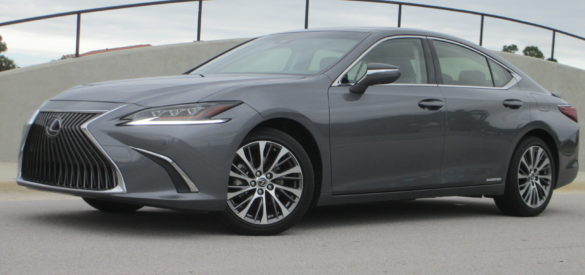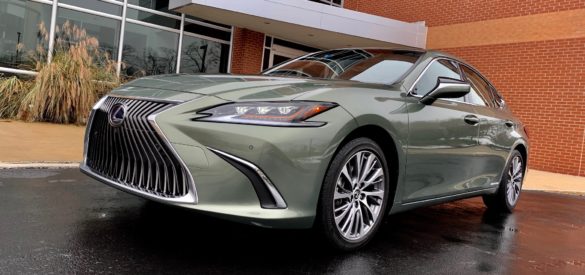LEXUS ES 300h 2019 QUICK TAKES
After nearly thirty years of success, the seventh-generation Lexus ES is set to redefine its status among entry-level executive sedans. Long known for its unparalleled comfort, refinement and luxury appointments, the 2019 Lexus ES builds on its strengths with an all-new chassis that allows for a more dynamic exterior design and the introduction of the first ES F SPORT. The introduction of the new Lexus ES continues the brand’s commitment to crafting vehicles with heightened excitement, emotion and passion. Traditional buyers will find the new ES more spacious and quieter while a new generation of customers will be introduced to a sedan with sharpened performance, advanced active safety technology and a level of craftsmanship rarely found in this segment. A new, fourth-generation Hybrid Drive System is used in the ES 300h. In addition to delivering stronger performance and exemplary fuel economy, the latest Hybrid Drive System has been designed to help eliminate the rubber band feeling associated with some hybrid systems.
An all-new 2.5-liter, four-cylinder gas engine (A25A-FXS) running on the Atkinson cycle is coupled with a smaller, more power dense electric motor and an all-new hybrid transaxle. The preliminary internal results are a combined 215 total system horsepower and a manufacturer estimated 44 combined mpg. The new aluminum-intensive gas engine delivers exceptional efficiency by combining a high-speed combustion design with several variable systems designed to conserve energy. The result is an engine that has a nearly identical displacement to its predecessor, yet delivers approximately 20 additional horsepower and 12 additional pound feet of torque. High-speed combustion is a core element of the new engine’s ability to provide the most efficient use of energy. To achieve this, the cylinder bores have been narrowed slightly (3.54 in. to 3.44 in.) and the stroke lengthened (3.86 in. to 4.07) to create an optimal 1:1.2 bore-to-stroke ratio as well as reducing the distance the fuel must travel to reach the edges of the cylinder. The angle between the valves was also increased to create a more direct path for the incoming air while the intake valve seats use a laser cladding process that allows for a larger valve seat area, reduced seat face temperatures and a smoother transition from the intake port to the combustion chamber. The result is an optimized swirl pattern and the ability to run more ignition advance in lean conditions without approaching knock limits.The new transaxle is over an inch (1.2) shorter than its predecessor thanks to a new arrangement of the electric motors that places them in a multi-axle configuration instead of the previous coaxial setup. The traditional planetary gear set has been replaced by a parallel shaft gear and a multi-function gear that incorporates a power split planetary ring gear, parking gear and counter drive gear into one compact unit.
The nickel-metal hydride battery that powers the electric motor has been relocated from the trunk to underneath the back seat. This was made possible by a 4.7-inch reduction in the height of the battery and the adoption of a more compact cooling system. Moving the battery under the seat not only frees up trunk space, it also improves the front-to-rear weight distribution of the ES for better handling.
LEXUS ES 2019 REVIEW
LEXUS ES 2019 REVIEW BY AUTO CRITIC STEVE HAMMES Whether they realize it or not, the ES is the car most people think of when they hear the name Lexus. For nearly 3 decades, it has been the go-to sedan…


